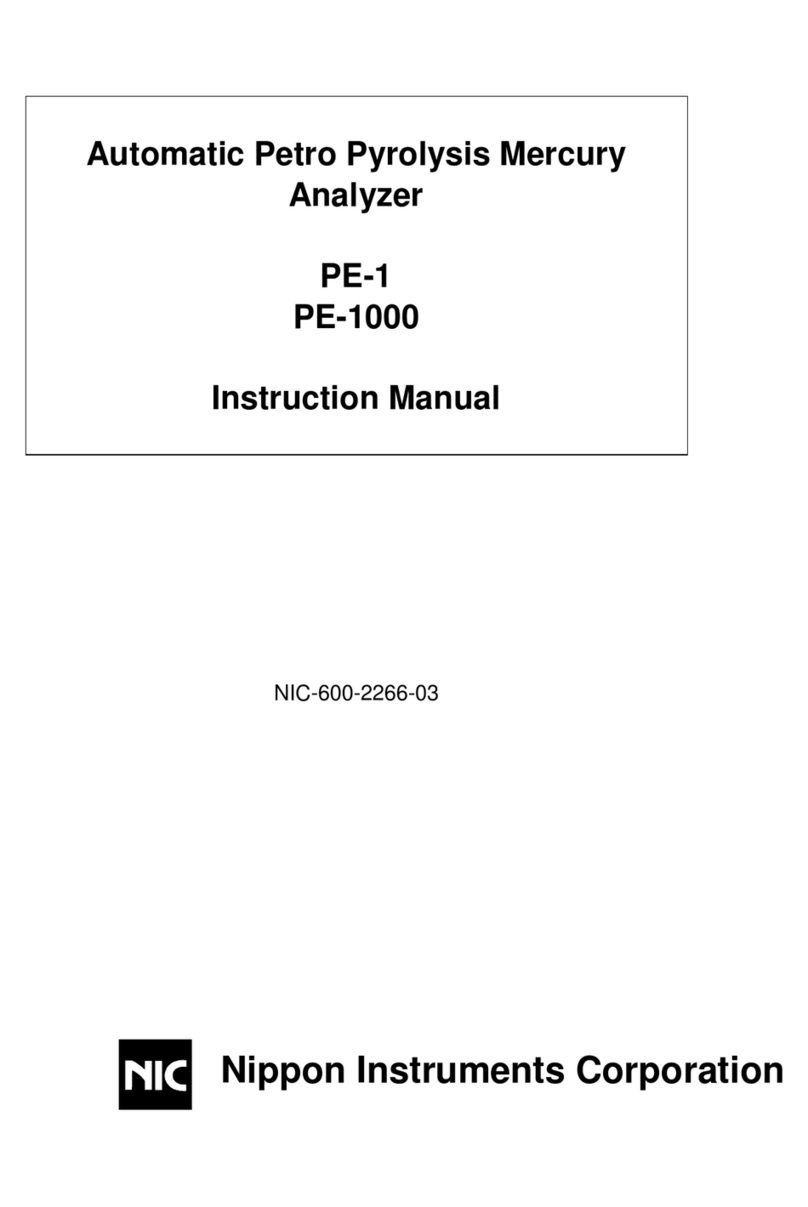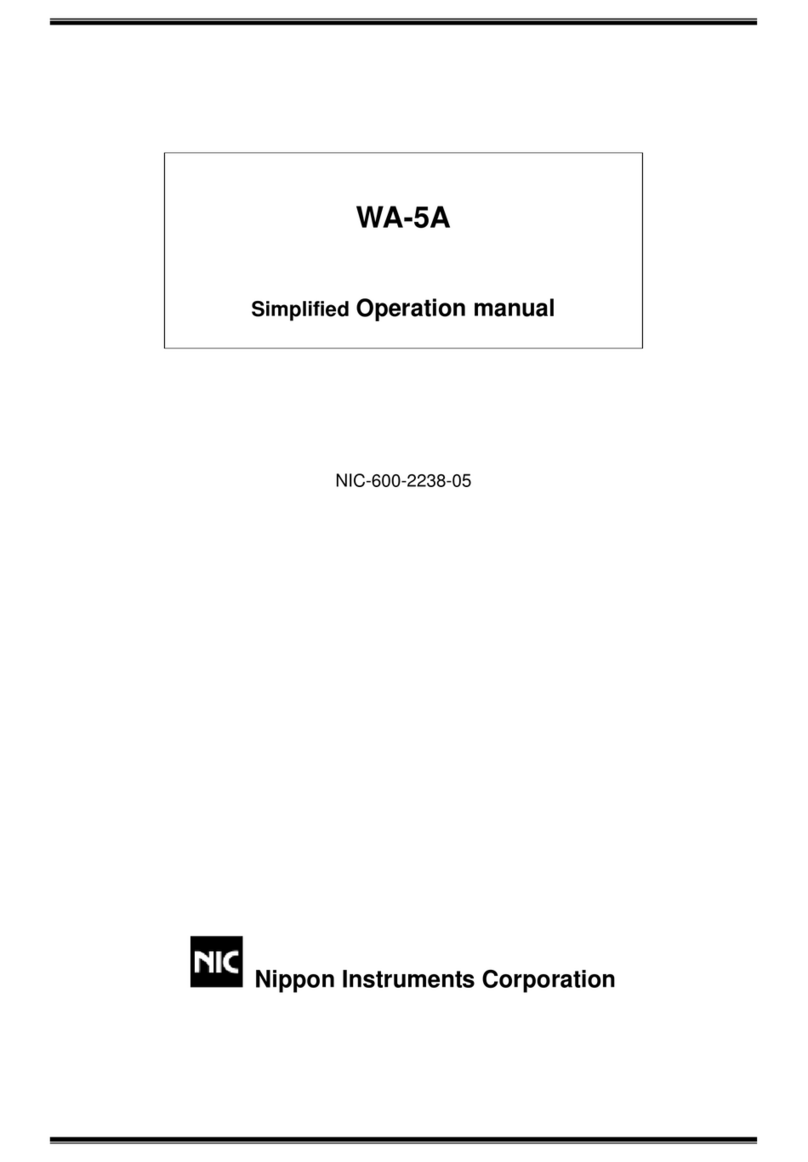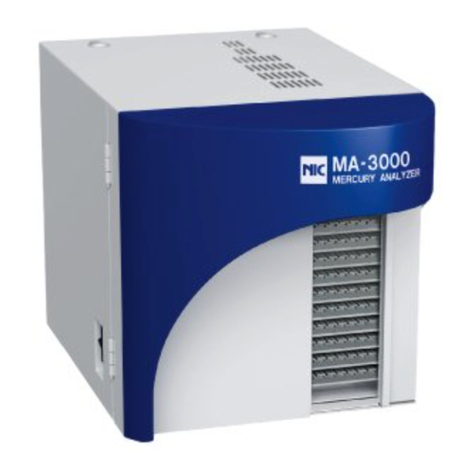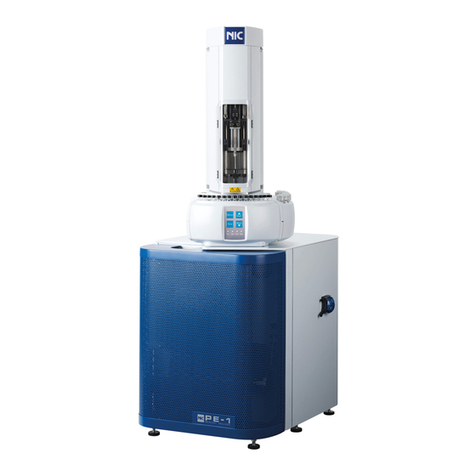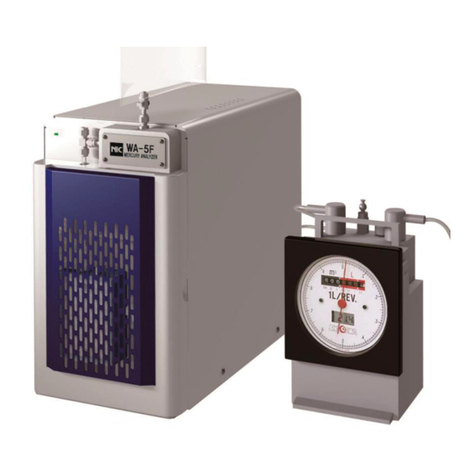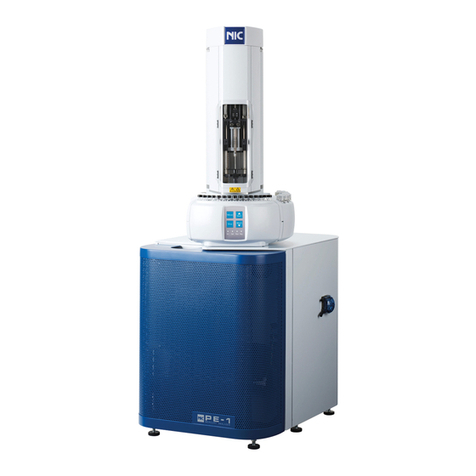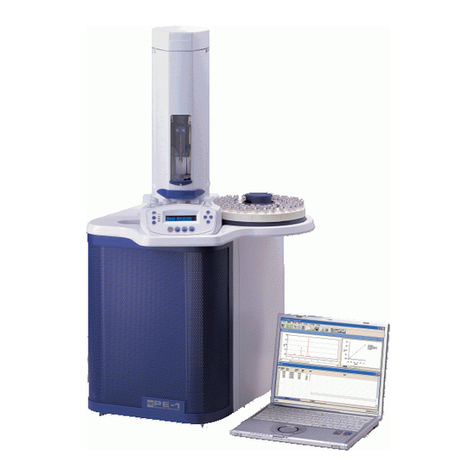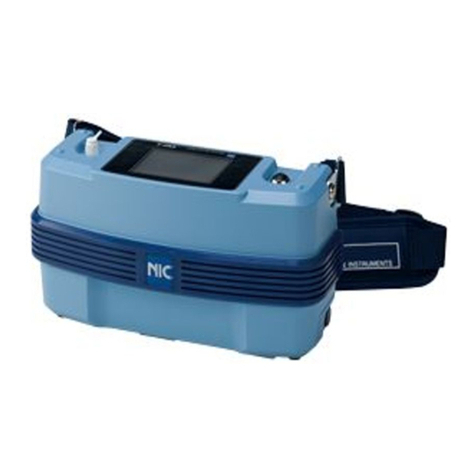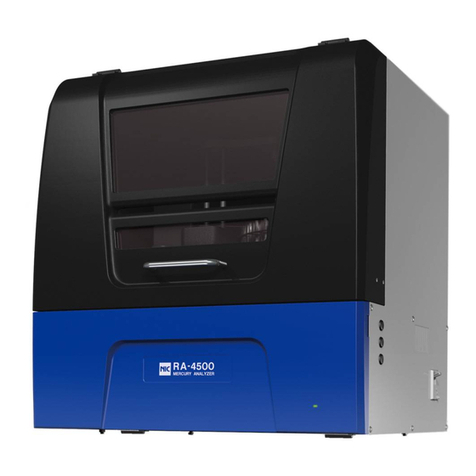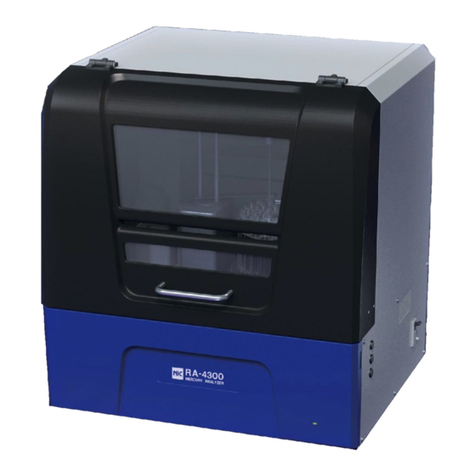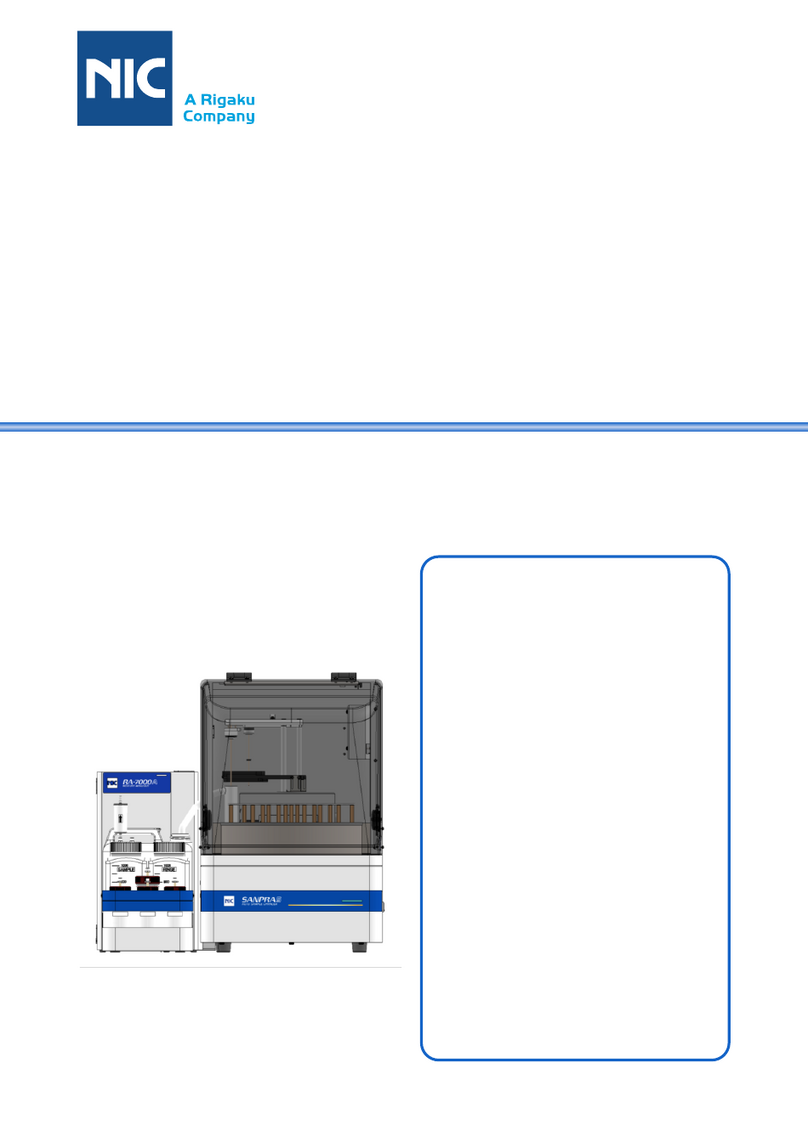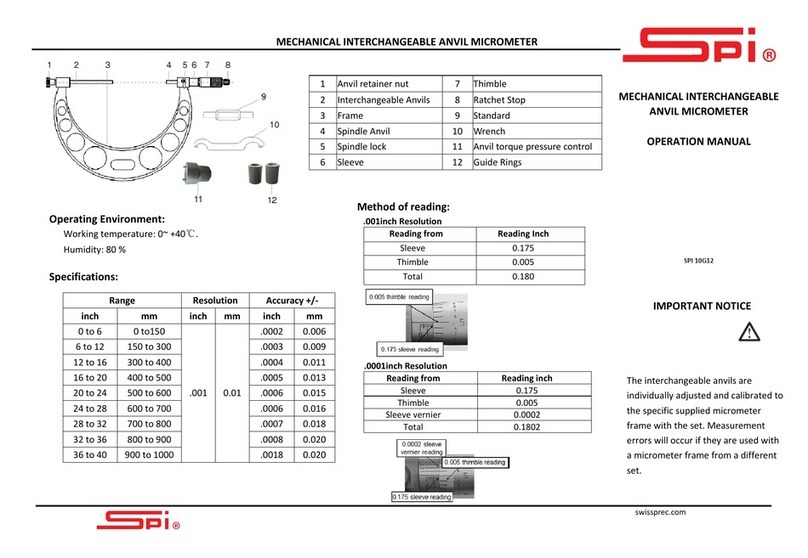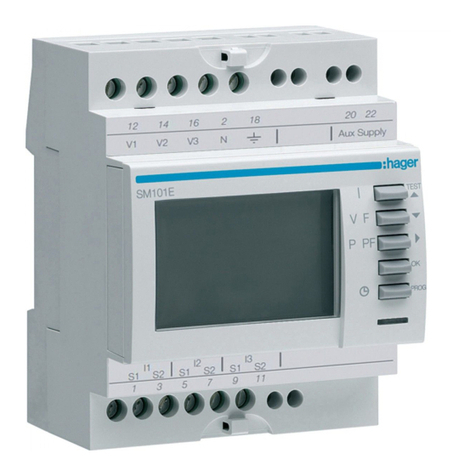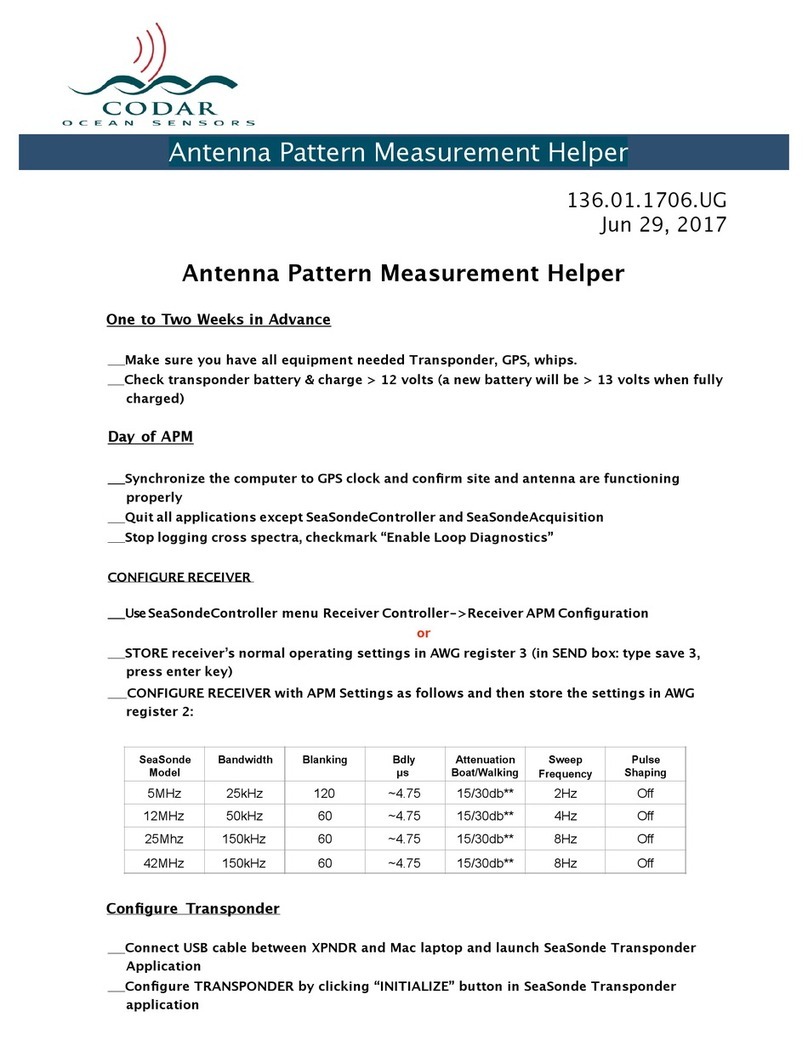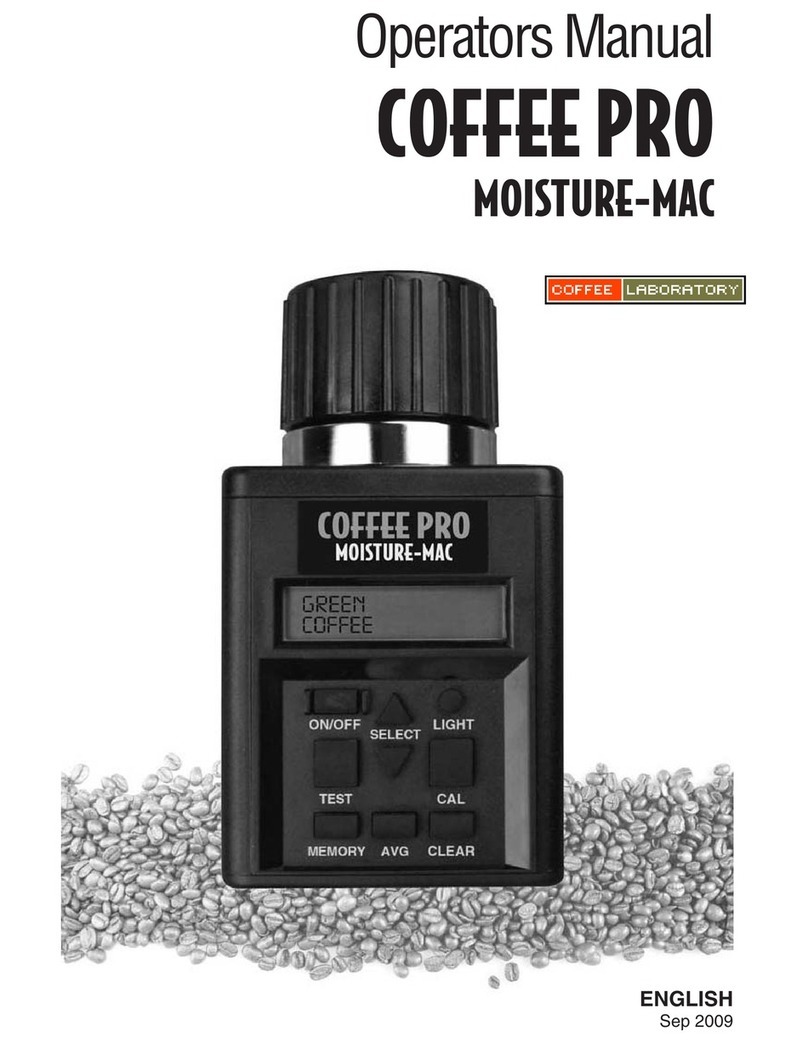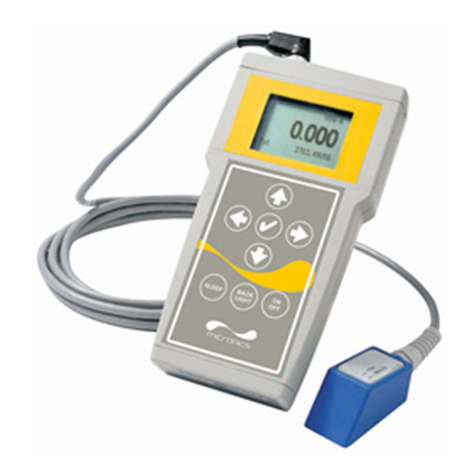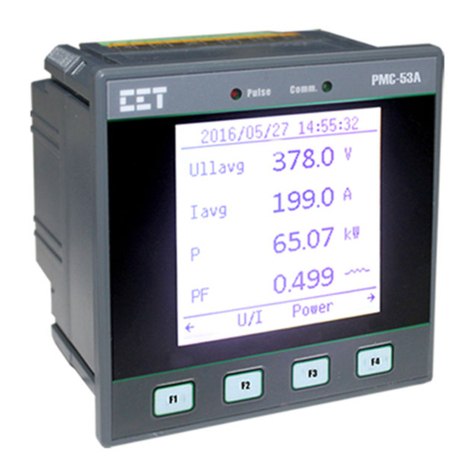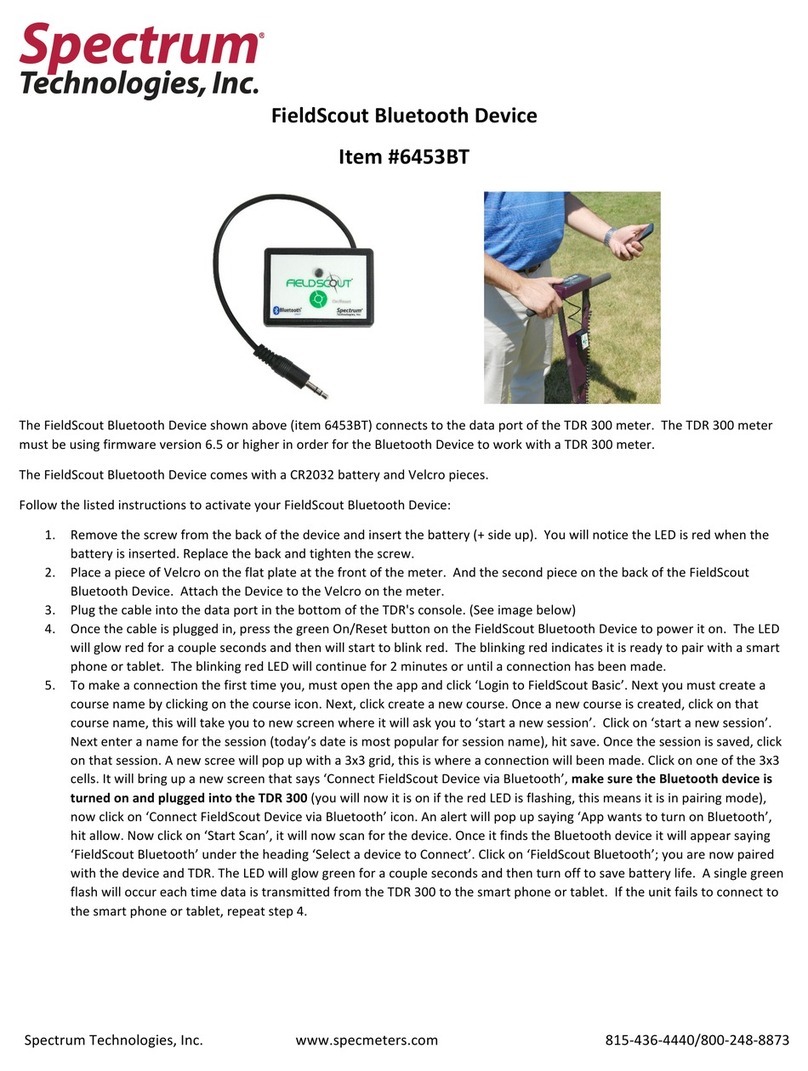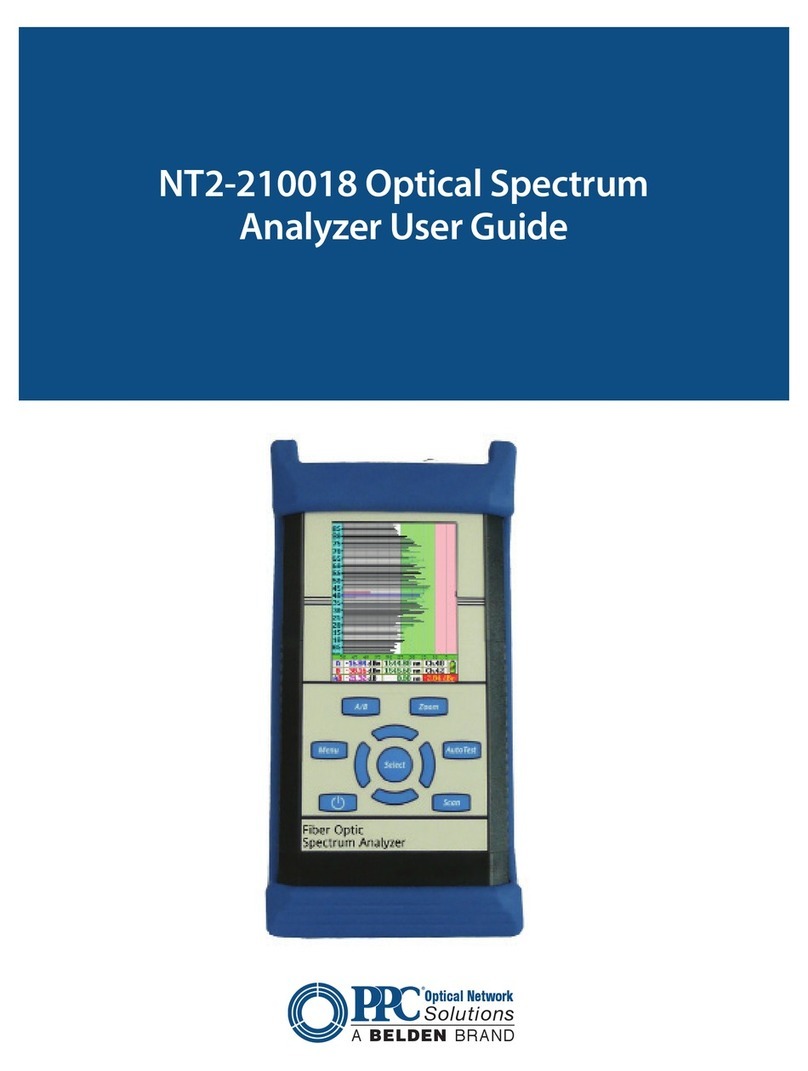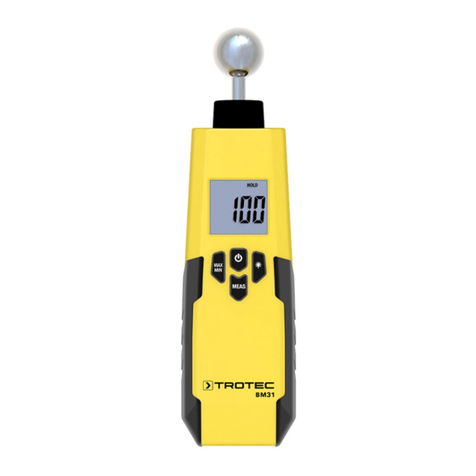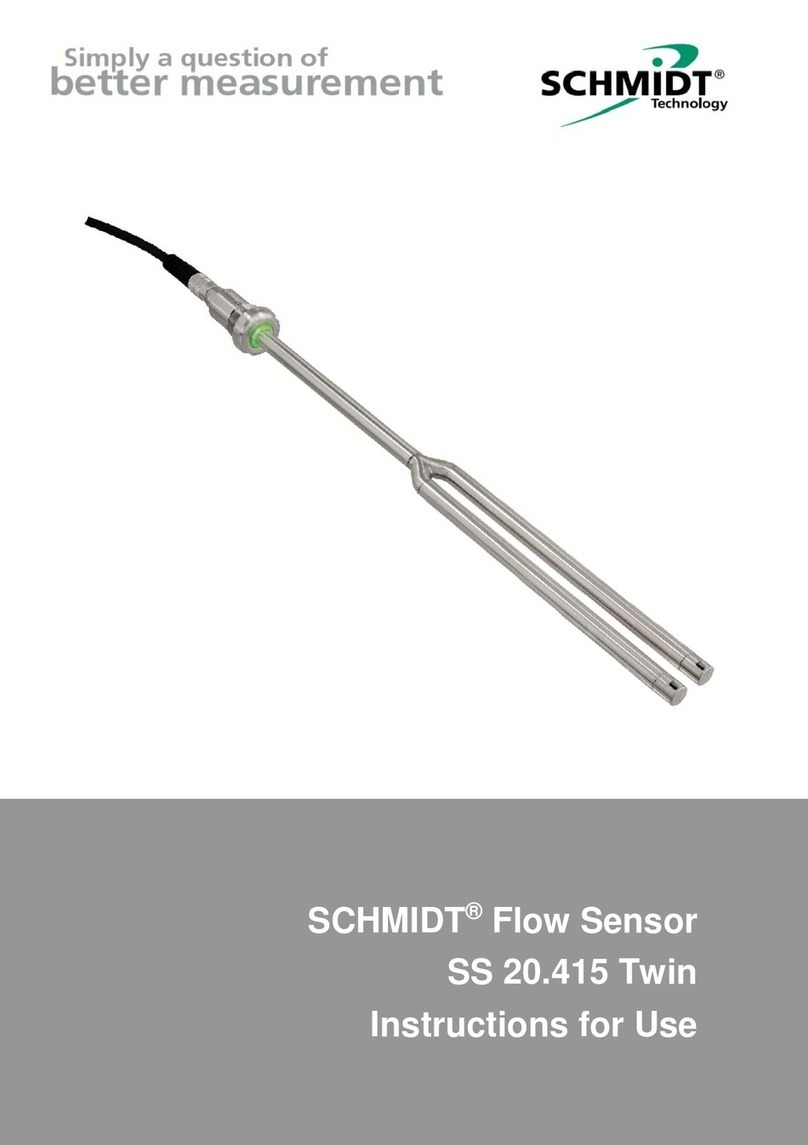Nic EMP-3 User manual

Portable Mercury Survey Meter
EMP-3
SIMPLIFIED MANUAL
NIC-TD-0000069-02
NIPPON INSTRUMENTS CORPORATION

Simplified Manual: EMP-3 NIC-TD-0000069-02
Nippon Instruments Corporation 1
1. OUTLINE
SAFETY PRECAUTIONS
To use this product safely, observe the following precautions.
Nippon Instruments Corporation will not take any responsibility for accidents caused
by a user’s carelessness.
In the case of mishandling, a user may be killed or suffer a serious
injury immediately.
In the case of mishandling, a user may be killed or suffer a serious
injury.
In the case of mishandling, a user may suffer an injury or material
damage is expected.
Although the EMP-3 has drip-proof and dustproof features
(except for sample gas) equivalent to IP63, to obtain precise
and accurate measurement results, it is advisable to avoid
installation in an environment with high temperature and
humidity or with much dust and exposure to rainfall or liquid.
Observe the installation requirements and installation
procedure. Otherwise, a failure may result.
Do not install the instrument within a 10 m radius from another
instrument that generates noise, such as a high output electric
power instrument, high frequency instrument, SCR controlled
machine, emission spectrophotometer or electric welder. Also
be fully careful of static electricity.
When measurements are made with the instrument kept
motionless, install it on a horizontal place with sufficient
strength.
Otherwise, a failure or a minor injury caused by an overturn or
a fall may result.
When carrying the instrument, put the belt on the shoulder
opposite from the instrument.
Otherwise, a failure or an injury caused by a fall may result.
Make sure that the probe to be used is not wet or dirty.
When attaching the probe or replacing a component, take care
not to damage the probe connector.
Danger
Warning
Caution
Caution

Simplified Manual: EMP-3 NIC-TD-0000069-02
Nippon Instruments Corporation 2
This instrument does not have explosion-proof structure.
Before measuring liquefied natural gas or liquefied petroleum
gas, be sure to collect some into a Tedlar bag.
Do not let liquid such as water splash the instrument. Never
operate the instrument with a wet hand. Otherwise, an electric
shock, a short circuit of an electronic circuit or a failure caused
by corrosion may result.
Do not disassemble or modify the product without permission.
Otherwise, a failure may result. For inspection or repair,
consult with our agent or service department.
Use the instrument after reading the instruction manual
carefully. Otherwise, a failure caused by an operational mistake
may occur.
Observe the range of the specification. If the instrument is used
out of the specification range, a failure may occur.
Do not give a shock to the instrument by dropping, throwing or
the like. The limit of fall height is 3cm.
Do not apply a strong external force to the screen by pushing
strongly, striking or the like.
Do not operate the instrument before the connection of the
probe is completed. Otherwise, fine particles will enter the
instrument and accurate measurements may become
impossible.
Select a probe suitable for a measurement position.
If any time-change component is not replaced, original
performance may not be demonstrated.
For data output, we recommend the supplied USB memory.
Although it is also possible to use a USB memory other than
the supplied one, data output may fail or data in the USB
memory may be damaged depending on a type.
Gas after a measurement is discharged from the outlet. When
measuring liquefied natural gas or liquefied petroleum gas, use
the instrument in a draft chamber or connect the outlet and
draft chamber or exhaust duct using a tube to discharge the gas.
Warning
Caution

Simplified Manual: EMP-3 NIC-TD-0000069-02
Nippon Instruments Corporation 3
Observe the following conditions. Otherwise, the battery may
ignite or explode.
●Do not use a battery other than the dedicated one.
●Charge the battery using the supplied battery charger.
When charging, do not apply a voltage out of the power
supply range to the battery charger.
●Charge and keep the battery indoors and at the normal
temperature (0C to 45C).
●Do not wet the battery with water or expose it to a humid
environment.
●Do not disassemble or modify the battery.
●Do not give a shock to the battery by dropping, throwing or
the like.
●Connect the battery to the analyzer or battery charger in the
right direction.
●If an abnormality of the battery such as a deformation,
heating or liquid leakage is found, stop using it
immediately.
●Do not charge forcibly or use the battery when its lifetime
has expired.
Wipe off dust attached around the power plug and terminals.
Otherwise, a fire may result.
The battery life decreases because of the self-discharge even
when the battery is not used. Check the remaining of battery
life before a measurement. When the battery has been left
unused, charge it before the use.
The battery is a consumable. The maximum capacity
deteriorates as charging is repeated. Replace it with a new one
early. (After 300 times, the capacity deteriorates to
approximately 60%.)
When charging is not completed even after 5 hours or more,
stop it promptly. The lifetime of the battery has possibly
expired, or the battery charger may be faulty.
When the battery has been damaged or liquid leakage has
occurred, do not charge it.
When discarding the battery the lifetime of which has expired,
cover the terminals with insulating tapes or the like, and then
dispose of the battery appropriately according to the
regulations or rules of the local government.
Warning
Caution

Simplified Manual: EMP-3 NIC-TD-0000069-02
Nippon Instruments Corporation 4
If the instrument is discarded inadequately, environmental
pollution or personal damage may result.
Dispose of it according to the regulations or rules of the local
government.
Caution

Simplified Manual: EMP-3 NIC-TD-0000069-02
Nippon Instruments Corporation 5
2. NECESSITIES FOR MEASUREMENT
(1) Battery
(2) Battery Charger
(3) Probe
(4) USB Memory
3. PREPARATION FOR MEASUREMENT
CHARGING AND CONNECTION OF BATTERY
Connect the battery.
* It is unnecessary to charge the battery each time it is used. However, when it has been
left unused for some period of time or the remaining battery life is insufficient at a
startup, use a spare battery or detach the battery and charge it using the dedicated
battery charger. (Refer to the Instruction Manual.)
WEARING OF INSTRUMENT
(1) Connect the probe to the inlet.
(2) Put the shoulder belt on the shoulder
opposite from the instrument.
(3) Fasten the waist belt to fix the instrument.
*Adjust the lengths of the shoulder belt
and waist belt so that the instrument
becomes horizontal.
To use the instrument on a desk or the like, stand the tilting
feet and install the instrument.
Shoulder Belt
Waist Belt

Simplified Manual: EMP-3 NIC-TD-0000069-02
Nippon Instruments Corporation 6
4. STARTUP
(1) Press the power button, and the startup screen will be displayed for 30 seconds or so.
(2) When the startup is completed, characters “STANDBY” appear and warming up for
10 minutes starts.
At this point of time, check the remaining battery life on the screen. If the remaining
battery life is insufficient, replace or charge the battery.
*The optical system is stabilized. Put the instrument where there is as less vibration
as possible.
(3) When the warming up is completed, the instrument enters the READY status and
characters “START” appear.
5. SETTINGS
Before using the instrument for the first time, make settings according to your purpose. Set
contents are kept even after the power is turned off.
When the instrument is turned on for the second time or later and a measurement is to be
made using the same conditions, settings need not be made again.
It is also possible to make settings when “STANDBY” is displayed.
(1) Select “MENU” - “Setting”.
Remaining Battery Life
: 100% - 80%
: 80% - 20%
: Less than 20%

Simplified Manual: EMP-3 NIC-TD-0000069-02
Nippon Instruments Corporation 7
(2) Press the arrow key to open “Measurement (1/2)” and select a measurement mode at
“Meas. Mode”.
Measurement Mode
Usage
Resolution
MOBILE
Portable use
1 g/m3 (Normal)
STATIC
Stationary use
0.1 g/m3 (High sensitivity)
1-MIN
Portable use
1 g/m3 (Normal)
2-MIN
3-MIN
(3) Press the arrow key to open “Measurement (2/2)” and select a gas type to be measured
at “Meas.Gas”.
Ambient: Ambient air
NG/LPG: Liquefied natural gas or liquefied petroleum gas
*In the case of the measurement of gas with small specific gravity, select
“NG/LPG”.
*The measurement of “NG/LPG” is possible only in the “STATIC” mode. Even if
selected other than “STATIC”, “Meas. Mode” becomes “STATIC” when
“NG/LPG” is selected for “Meas.Gas”.
(4) At “Normal. Temp.”, press the icon on which a temperature has been displayed, and
set a reference temperature to be used for the normalization correction.

Simplified Manual: EMP-3 NIC-TD-0000069-02
Nippon Instruments Corporation 8
(5) At “Ambient Press.”, press the icon on which a pressure has been displayed, and set an
atmospheric pressure in the measurement environment.
*From a difference from the set pressure, the pressure of measurement gas is
calculated and a correction is made. By setting “Ambient Press.” according to the
altitude etc. of the measurement environment, a more precise and accurate
normalization correction can be made.
(6) Press “Exit” to return to the “START” screen.

Simplified Manual: EMP-3 NIC-TD-0000069-02
Nippon Instruments Corporation 9
6. MEASUREMENT PROCEDURE
START OF MEASUREMENT
(1) Direct the probe to measurement sample.
(2) Press “START”. A measurement starts.
*Before starting a measurement, make sure that the remaining battery life is sufficient
and that the measurement mode is correct.
CHECKING OF DATA
A measurement result is displayed. Check data.
It is possible to switch the screen to “Numeric” or “Graph”.
Numeric Screen Graph Screen
TERMINATION OF MEASUREMENT
When the “STOP” button is pressed, the measurement is terminated.

Simplified Manual: EMP-3 NIC-TD-0000069-02
Nippon Instruments Corporation 10
MEASUREMENT OF LIQUEFIED NATURAL GAS OR LIQUEFIED
PETROLEUM GAS
After checking the cautions concerning handling at the beginning, measure according to the
following opration method.
(1) Install the instrument in a draft chamber or connect the outlet and draft chamber or
exhaust duct using a tube.
Connect a tube with an inside diameter of 2.5 mm or less to the outlet.
*Tube aren’t included. Please prepare.
(2) Collect gas to be measured into a Tedlar bag.
(3) Set “NG/LPG” for “Meas. Gas”.
(4) Connect the Tedlar bag and probe.
(5) Open the faucet of the Tedlar bag and press “START” to start a measurement.
*If you connect the Tedlar Bag during measurement, measurement result will receive
interference. Please wait some cycles until the interference is removed by Zero Check.
to
draft chamber

Simplified Manual: EMP-3 NIC-TD-0000069-02
Nippon Instruments Corporation 11
7. EXPORT OF MEASUREMENT DATA
(1) Select “MENU” - “Export Data”.
(2) Insert the supplied USB memory into the USB port.
(3) Press a folder name to select a folder for output. After the selection, the color of the cell
changes.
(4) Press “Export”. Measurement results are output to the USB memory in the CSV file
format.
(5) Pull out the USB memory and close the cover of the external interface unit.
8. SHUTDOWN OPERATION
(1) Hold down the power button for three seconds or more, and the following confirmation
screen will appear. When “Yes” is pressed, the instrument is turned off.
9. ERRORS AND WARNINGS
Even when a warning message has been displayed, a measurement operation is possible.
However, when an error message has been displayed, it is impossible to start a measurement.
Remove the cause of the error, restart the instrument and then start a measurement.
Please refer to the Instruction Manual.
Table of contents
Other Nic Measuring Instrument manuals


